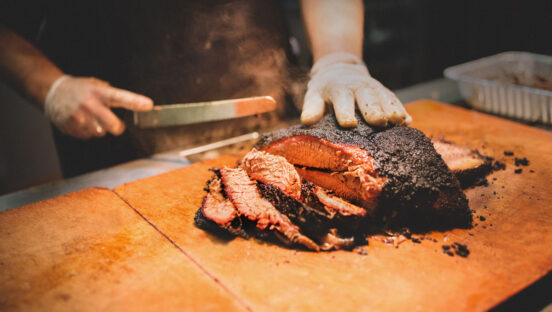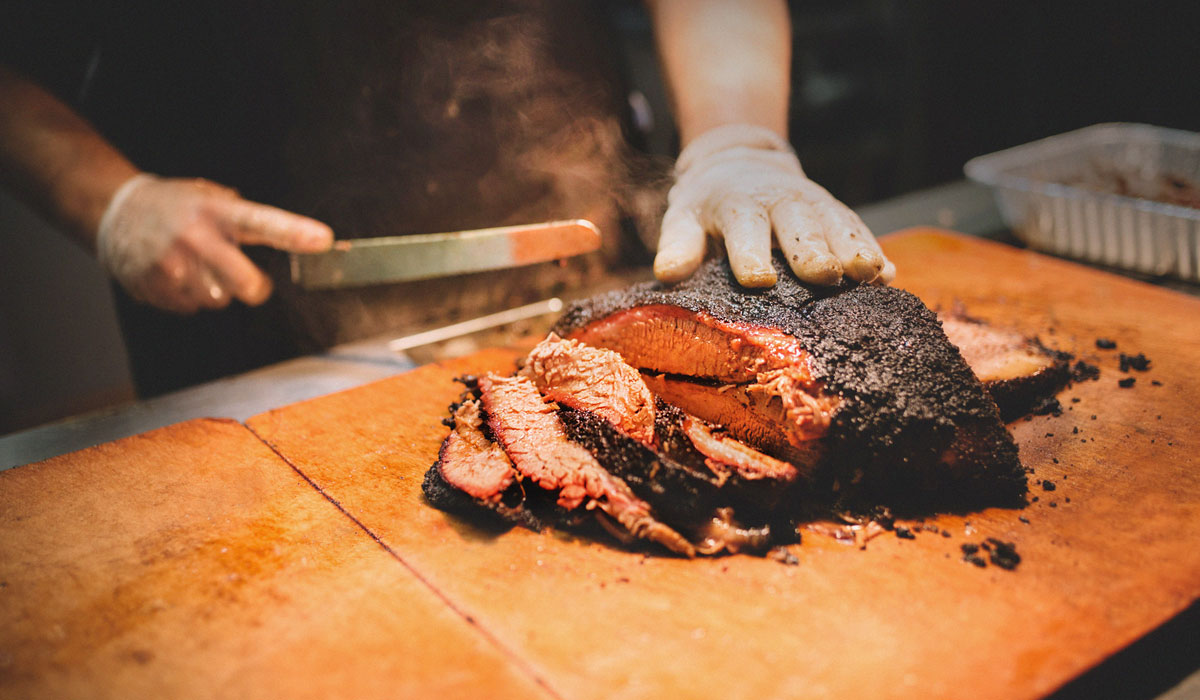City Barbeque CEO Mike Muldoon stood on stage at the ICR Conference in Orlando, showcasing his competition.
The slide was divided into quick service, fast casual, and full service. Some of the biggest names in barbecue were listed, like Dickey’s Barbecue Pit (580-plus restaurants), Sonny’s BBQ (roughly 100 units), and Mission BBQ (about 115 stores). In comparison, City Barbeque fits in at 61 locations spanning Ohio, Indiana, Kentucky, Illinois, Michigan, Wisconsin, North Carolina, and Georgia.
The point of the display, Muldoon said, was to show no one has managed to take hold of the barbecue category yet, similar to what Wingstop did with wings or what Chipotle accomplished with Mexican food. City Barbeque hopes to change the narrative.
“Whether you’re talking about the [quick-service] category, fast casual, or casual dining, there’s some very good brands out here,” Muldoon said. “Some are expanding, some aren’t doing much and some are in decline. But what we do know, the fact of the matter is nobody owns the barbecue lane, and that’s what we intend to do. We believe that our brand can go anywhere. And I don’t mean any disrespect. In fact, I have tremendous respect for a lot of barbecue competitors up here and others that aren’t listed. But when I take a look at the business model and where we are today as a brand at City Barbeque and I think about our competition quality craft, we believe it is a differentiator for us.”
The M.O. Muldoon references, “competition quality craft,” starts with founder Rick Malir, who had enough confidence to open City Barbeque in 1999 after his team beat 450 others to win best brisket at the American Royal World Series of Barbecue. At restaurants, the brisket is smoked low and slow for 18 hours over locally sourced hickory. Smokers run 24 hours a day, 365 days per year. City Barbeque is closed three days annually, but during those holidays, a person still comes in to reload the meat for the following business day.
Muldoon said joints are designed to activate all the senses, starting with someone pulling up to the parking lot. The brand wants the smoke to grab a customer’s attention. It wants guests to see pit masters monitoring the smokers and employees slicing the brisket.
“I don’t know how many of you have ever competed in a barbecue event, but the best score you can get in the competition for barbecue is a nine,” Muldoon told the crowd at the ICR Conference. “We talk daily about the importance of everything that we do, whether brisket, potato salad, or banana pudding, and it’s got to be competition quality and it’s got to be a nine.”
Muldoon is often asked whether barbecue—typically viewed as a regional cuisine—can travel. And he believes it’s a fair question. His answer is “absolutely,” and the evidence is Midwestern-based City Barbeque successfully entering southern strongholds in North Carolina and Georgia. The chain’s systemwide AUV is $3.3 million, and stores in Raleigh and Atlanta exceed that by more than 15 percent. Also, just recently, City Barbeque opened in High Point, North Carolina, which is based in a region littered with mom-and-pop barbecue joints. But, per Muldoon’s report, the first few days are “off to a great start.”
“We all know the South has loved their barbecue forever, and we’re very excited about the fact that they love City Barbeque,” Muldoon said.
The chain opened eight restaurants last year and plans to debut between 10–12 in 2023. That includes state No. 9 in Greenville, South Carolina, which is scheduled for either July or August. Using real estate analytics, City Barbeque identified white space for 875 additional restaurants throughout the country. Muldoon acknowledges it will take some time to reach that mark, but he’s also confident demand is there. He’s seen more non-barbecue brands offer barbecue items in the past 18 months than ever before.
Aside from food, Muldoon said the chain’s biggest attractor is technology. Just before the pandemic arrived, City Barbeque invested in its website/app and tested FlyBuy for curbside pickup. It also experimented with digital menu boards, allowing for faster pivots on pricing, weather, and regional menu items, instead of waiting six to eight weeks to print, ship, and put up new signs.
“A lot of people want to say it’s luck,” the CEO said. “We decided to call it great insight and incredible leadership at City Barbeque.”
Because of the chain’s foresight, digital sales rose from 22 percent pre-COVID to 40 percent at the start of 2023. Muldoon expects that figure to keep growing because “we really are just now beginning to put our shoulder behind this.”
Drive-thru is a major part of the story, too. City Barbeque opened its first drive-thru location in October 2020 in Dayton, Ohio, and now has 10 open. The ordering channel has proven to be a game-changer. Non-drive-thru stores earn $3.1 million in AUV while drive-thru units bring in $3.7 million. At the end of 2022, only 15 percent of the chain’s footprint was drive-thru, but by 2024, Muldoon said it will be closer to 25 percent. Catering is also a big opportunity. The channel earned more than $30 million in 2022, or about 17 percent of total sales—basically doubling 2019’s figures. City Barbeque claims it can serve 5 to 5,000, but still managed to execute an event of 8,700 people last year.
From 2011-2022, City Barbeque averaged 6 percent same-store sales growth. After sinking 12 percent in 2020, it bounced back with 28 percent growth in 2021 and an additional 5 percent bump in 2022. Muldoon attributes that to a strong management team with backgrounds from Applebee’s, Wendy’s, Donatos, FAT Brands, Moe’s, QDOBA, Bob Evans, and Panera.
The chain may have opened more than two decades ago, but Muldoon said things are just getting started.
“The last 24 years, we’ve been serving and creating happiness in those 24 years,” Muldoon said. “We got 61 joints on the ground. I promise you, it’s only going to take a fraction of that time for the next 61.”










